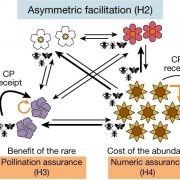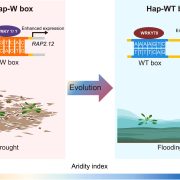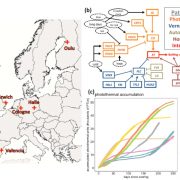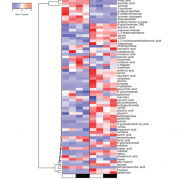Evolution of phytolith deposition in modern bryophytes (New Phytol) ($)
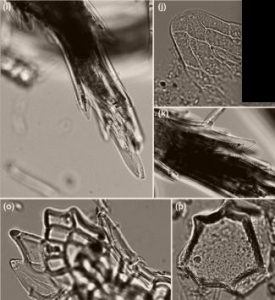 When monosilicic acid is present in the soil, many plants absorb it through their roots and precipitate rigid silica aggregates known as phytoliths. Phytolith deposition has been observed in all major groups of vascular plants, however the patterns of deposition in bryophytes are comparatively under studied. Phytoliths can persist long after the plant has perished, so they offer unique insight into the history of plants. Thummel et al. conducted a survey of phytolith deposition patterns within liverworts, mosses, and hornworts and used published phylogenies to create ancestral state recreations for liverworts and mosses to understand how their silica production has changed throughout evolutionary time. They also aimed to determine the viability of using fossilized phytolith deposits to learn about the emergence of bryophyte lineages. Across the bryophytes surveyed, phytoliths were found in all clades and multiple subclades with variation in degree of deposition and phytolith morphology. There was a correlation between higher deposition and liverworts and mosses with specialized water-conducting cells. The ancestral state recreations revealed that liverworts and mosses have likely evolved high silica deposition in separate lineages multiple times independently, rather than from the previously theorized ancestor with heightened phytolith deposition. Certain morphological characteristics of phytoliths were clade- or genus-specific, meaning that phytoliths with those structures could be successfully used to study the evolution of bryophytes and more specifically water conductance in early land plants. Thummel et al. provide the first broad survey of phytoliths in bryophytes as well as an exciting potential for use in future paleobotanical studies. (Summary by Rebecca Hayes) New Phytol. 10.1111/nph.15559
When monosilicic acid is present in the soil, many plants absorb it through their roots and precipitate rigid silica aggregates known as phytoliths. Phytolith deposition has been observed in all major groups of vascular plants, however the patterns of deposition in bryophytes are comparatively under studied. Phytoliths can persist long after the plant has perished, so they offer unique insight into the history of plants. Thummel et al. conducted a survey of phytolith deposition patterns within liverworts, mosses, and hornworts and used published phylogenies to create ancestral state recreations for liverworts and mosses to understand how their silica production has changed throughout evolutionary time. They also aimed to determine the viability of using fossilized phytolith deposits to learn about the emergence of bryophyte lineages. Across the bryophytes surveyed, phytoliths were found in all clades and multiple subclades with variation in degree of deposition and phytolith morphology. There was a correlation between higher deposition and liverworts and mosses with specialized water-conducting cells. The ancestral state recreations revealed that liverworts and mosses have likely evolved high silica deposition in separate lineages multiple times independently, rather than from the previously theorized ancestor with heightened phytolith deposition. Certain morphological characteristics of phytoliths were clade- or genus-specific, meaning that phytoliths with those structures could be successfully used to study the evolution of bryophytes and more specifically water conductance in early land plants. Thummel et al. provide the first broad survey of phytoliths in bryophytes as well as an exciting potential for use in future paleobotanical studies. (Summary by Rebecca Hayes) New Phytol. 10.1111/nph.15559


